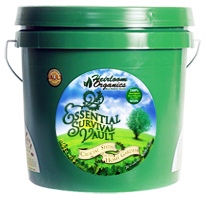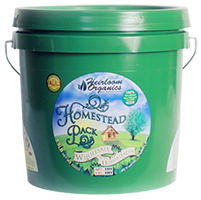|
Home > Guides > Fruits > Pumpkin |
|
How to Grow Pumpkin | Guide to Growing Pumpkin |
|
|
|
|
| |
|
|
| |
|
| |
Overview With fertile soil and a long enough growing season, it's easy to grow your own Jack-o-lanterns -- if you have enough space. Choose varieties bred for flavor if you want to make pies. |
|
| |
|
|
| |
|
|
| |
|
|
|
|
|
|
|
|
|
Well Drained, High Fertility |
|
|
|
|
|
|
|
|
|
|
|
|
Growing Guide
GROWING NOTES
Prefers well-drained, fertile, loose soil, high in organic matter with pH between 5.8 and 6.8. Plentiful and consistent moisture is needed from the time plants emerge until fruits begin to fill out.
Tender annual.
If you have plenty of space, good soil and a long enough growing season, pumpkins are easy to grow.
Most varieties grow on vines that spread 8 feet or more. Even smaller bush types spread 5 feet or more.
MAINTAINING
Pumpkins like warm soil and are very sensitive to frost. So don’t be in a rush to plant early in spring. Wait until danger of frost has passed and soil has warmed to about 70 F, or about 2 weeks after the last frost date.
Unless you are trying to grow a long-season variety in an area that gets early frosts, there’s really no need to start pumpkins inside. Instead, direct seed 1 to 1 1/2 inches deep into hills (which warm and drain earlier in the season) or rows. Sow 4 to 5 seeds per hill. Space hills about 4 to 8 feet apart, depending on the size of the vine. (Even some of the mini-fruited pumpkins grow on very large vines.) When the plants are 2 to 3 inches tall, thin to 2 to 3 plants per hill by snipping off unwanted plants without disturbing the roots of the remaining ones. In rows, sow seeds 6 to 12 inches apart in rows 6 to 10 feet apart. Snip off plants to thin to one plant every 18 to 36 inches.
If you need to start plants early, plant inside in 2- to 3-inch pots or cells 3 to 4 weeks before transplanting outside. Sow 3 or 4 seeds per pot and thin to one or two plants by snipping off the weaker plants to avoid damaging the roots of those that remain. Harden off by cutting back on water and reducing temperature before transplanting. Plant transplants out in the garden at the same final spacings above after all danger of frost has passed.
Black plastic mulch can speed growth, especially in cool, short-season areas. At the end of the season, remove or till in vines to reduce mildew. Use row covers to protect plants early in the season and to prevent insect problems. Remove before flowering to allow pollination by insects or when hot weather arrives.
Mulching plants helps retain moisture and suppress weeds. Mounding soil around the base of the plants can discourage squash borers from laying eggs.
|
|
| |
|
| |
Heirloom seeds are the gardeners choice for seed-saving from year-to-year. Learning to save seeds is easy and fun with these books. Before you harvest, consider which varieties you might want to save seeds from so that your harvesting practice includes plants chosen for seed saving. Be sure to check out our newest seed packs, available now from Heirloom Organics. The Super Food Garden is the most nutrient dense garden you can build and everything you need is right here in one pack. The Genesis Garden s a very popular Bible Garden collection. The Three Sisters Garden was the first example of companion planting in Native American culture. See all of our brand-new seed pack offerings in our store.
|
|
| |
|
|
| |
Harvesting Guide
HARVESTING
A pumpkin should be left on the vine until its desired color is reached. Once the pumpkin is picked, the color stops developing.
You can tell if a pumpkin is ripe by thumping the pumpkin and by examining its skin. If it makes a hollow sound when thumped, the pumpkin is ready to be picked. Additionally, the pumpkin is ripe is if the skin feels hard, almost like a shell. When you press your fingernail into a ripe pumpkin, it should resist puncture.
When harvesting a pumpkin use a sharp knife or scissors to cut the fruit from the vine. When cutting, be sure to leave a long handle on the pumpkin.
To ensure the pumpkin lasts for a long time, clean it, using a 10 percent bleach solution. The pumpkin can be sprayed with the bleach solution or dipped in it.
Curing involves elevating storage temperatures to 80 to 85 F with 75 to 80 percent relative humidity for approximately 10 days. Curing heals wounds, helps ripen immature fruit, enhances color, and ensures a longer post-harvest life.
After curing, the pumpkin can be coated in edible grade food wax if it is going to be eaten or with shellac if it will not. Store the pumpkin on its end out of direct sunlight. Following these simple steps, a pumpkin can be stored for two to three months.
SAVING SEEDS
Remove the pulp and seeds from inside the pumpkin. Place this in a colander. Place the colander under running water. As the water runs over the pulp, start picking out the seeds from the pulp. Rinse them in the running water as you do. Do not let the pumpkin pulp sit in non-running water. There will be more seeds inside the pumpkin than you will ever be able to plant, so once you have a good amount of seeds rinsed, look over them and choose the biggest seeds. Plan on saving 3 times more pumpkin seeds than the number of plants you will be growing next year. Larger seeds will have a better chance of germinating. Place the rinsed seeds on a dry paper towel. Make sure they are spaced out otherwise the seeds will stick to one another. Place in a cool dry spot for 1 week. Once the seeds are dry, store pumpkin seed for planting in an envelope.
|
|
| |
|
|
|
| |
|
|
|
|
|
| You can find this variety in the following Seed Packs: |
|
  
  |
|
| Click the packs below to see some of our other wonderful products |
|
|
|
|
|
|
|